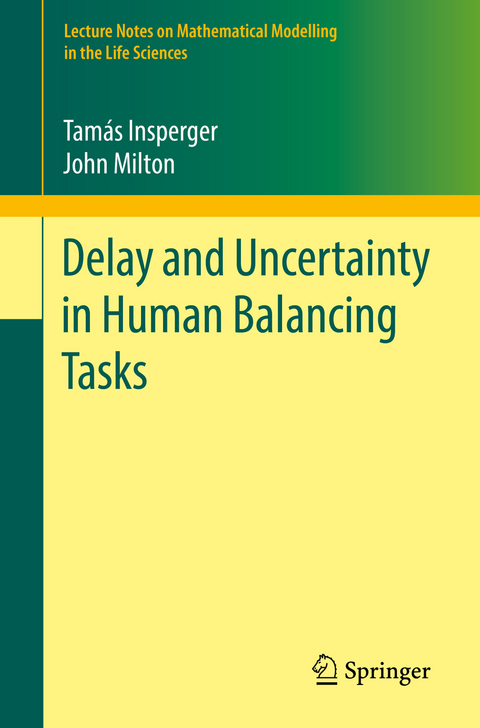
Delay and Uncertainty in Human Balancing Tasks
Springer International Publishing (Verlag)
978-3-030-84581-0 (ISBN)
This book demonstrates how delay differential equations (DDEs) can be used to compliment the laboratory investigation of human balancing tasks. This approach is made accessible to non-specialists by comparing mathematical predictions and experimental observations. For example, the observation that a longer pole is easier to balance on a fingertip than a shorter one demonstrates the essential role played by a time delay in the balance control mechanism. Another balancing task considered is postural sway during quiet standing.
With the inverted pendulum as the driver and the feedback control depending on state variables or on an internal model, the feedback can be identified by determining a critical pendulum length and/or a critical delay. This approach is used to identify the nature of the feedback for the pole balancing and postural sway examples. Motivated by the question of how the nervous system deals with these feedback control challenges, there is a discussion of ''microchaotic'' fluctuations in balance control and how robust control can be achieved in the face of uncertainties in the estimation of control parameters. The final chapter suggests some topics for future research.
Each chapter includes an abstract and a point-by-point summary of the main concepts that have been established. A particularly useful numerical integration method for the DDEs that arise in balance control is semi-discretization. This method is described and a MATLAB template is provided.
This book will be a useful source for anyone studying balance in humans, other bipedal organisms and humanoid robots. Much of the material has been used by the authors to teach senior undergraduates in computational neuroscience and students in bio-systems, biomedical, mechanical and neural engineering.
Tamas Insperger is a professor and chairperson of the Department of Applied Mechanics at the Budapest University of Technology and Economics and the group leader of the MTA-BME Lendület Human Balancing Research group. He is an author with Gabor Stepan of the book "Semi-discretization for time-delay systems".
John Milton is a professor of computational neuroscience at The Claremont Colleges. He has authored three books: "Mathematics as a Laboratory tool: Dynamics, delays and noise" with Toru Ohira, "Epilepsy as a dynamic disease" with Peter Jung and "Dynamics of small neural populations".
1. Introduction.- 2. Background.- 3. Pole Balancing at the Fingertip.- 4. Sensory Dead Zones: Switching Feedback.- 5. Microchaos in Balance Control.- 6. Postural Sway During Quiet Standing.- 7. Stability Radii and Uncertainty in Balance Control.- 8. Challenges for the Future.- References.- Semi-discretization Method.- Stability Radii: Some Mathematical Aspects.- Index.
"The book is well and balanced writing." (Andrey Zahariev, zbMATH 1484.92001, 2022)
| Erscheinungsdatum | 20.10.2021 |
|---|---|
| Reihe/Serie | Lecture Notes on Mathematical Modelling in the Life Sciences |
| Zusatzinfo | XIII, 157 p. |
| Verlagsort | Cham |
| Sprache | englisch |
| Maße | 155 x 235 mm |
| Gewicht | 272 g |
| Themenwelt | Mathematik / Informatik ► Mathematik ► Analysis |
| Medizin / Pharmazie ► Physiotherapie / Ergotherapie ► Orthopädie | |
| Naturwissenschaften ► Biologie ► Humanbiologie | |
| Schlagworte | balancing tasks • Delay differential equations • Delay-differential equations • Feedback • microchaos • neurological feedback control mechanisms • pole balancing • Pole balancing at the fingertip • postural sway • stability • Time delay |
| ISBN-10 | 3-030-84581-8 / 3030845818 |
| ISBN-13 | 978-3-030-84581-0 / 9783030845810 |
| Zustand | Neuware |
| Informationen gemäß Produktsicherheitsverordnung (GPSR) | |
| Haben Sie eine Frage zum Produkt? |
aus dem Bereich


